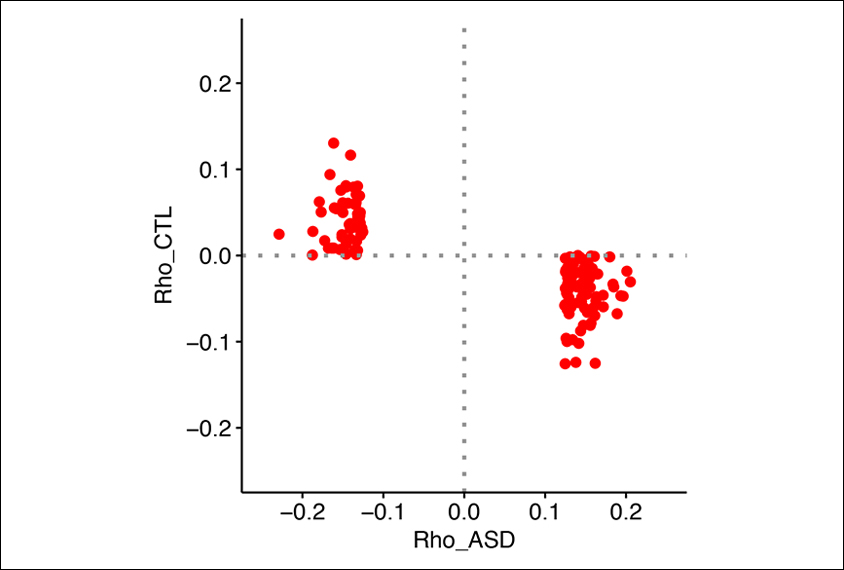
THIS ARTICLE IS MORE THAN FIVE YEARS OLD
This article is more than five years old. Autism research — and science in general — is constantly evolving, so older articles may contain information or theories that have been reevaluated since their original publication date.
A different set of genes regulates brain activity in people with autism than the set involved in controls. Researchers arrived at this finding by looking at brain imaging data as well as at genes expressed in postmortem brains.
They presented the unpublished findings today at the 2017 Society for Neuroscience annual meeting in Washington, D.C.
The work could uncover new genes involved in autism, says lead investigator Genevieve Konopka, assistant professor of neuroscience at University of Texas Southwestern Medical Center in Dallas, who presented the findings.
The findings are a follow-up to a 2015 study in which Konopka’s team compared data from controls in two public datasets: one containing gene expression patterns from postmortem brains and the other detailing brain activity measured with functional magnetic resonance imaging (fMRI).
That study revealed a set of 38 genes that may control resting-state brain activity in typical people. These genes are either turned on or off in regions of the cerebral cortex — the brain’s outer layer — that are active while people rest in a scanner.
Based on this, Konopka and her colleagues set out to look at genetic signatures in people with conditions such as autism.
Merging data:
They analyzed brain scans from 487 people with autism and 557 controls, housed in the public data repository known as the Autism Brain Imaging Data Exchange. They also measured the expression of genes in postmortem brain samples from people with autism and controls.
For each brain region they analyzed, they looked at tissues from a range of 26 to 63 people with autism — or an average of 35 people with the condition.
The team identified 146 genes whose expression levels track with the brain activity patterns in people with autism or controls. Some of the genes are already known to be linked to autism.
Few of the genes overlap with the previous set of 38. This discrepancy could be due to differences in the methods used between the two studies, Konopka says. She says the new list of genes is preliminary and likely to change as the team analyzes additional data.
One next step would be to try to correlate gene expression patterns in autism brains with brain activity during particular tasks, such as looking at faces. “We’re trying to relate the genes to the behavior,” she says. “This is a new field, and this is just the beginning.”
For more reports from the 2017 Society for Neuroscience annual meeting, please click here.
By joining the discussion, you agree to our privacy policy.